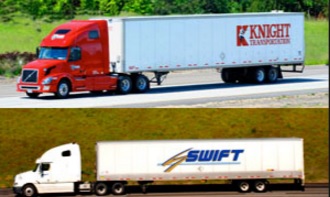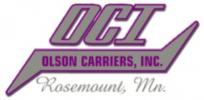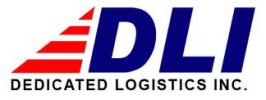2 of America's biggest truckers are merging to form a $5 billion industry giant
Submitted by Bill on
From Business Insider Apr 10, 2017
Knight Transportation and Swift Transportation have agreed to merge to create a North American trucking giant.
The merged firm, to be called Knight-Swift, will have a holding-company structure while maintaining the distinct brands, according to a statement Monday.
In an all-stock transaction, each Swift share will convert into 0.72 shares of the merged company. Each Knight share will be swapped for one Knight-Swift share.
The deal would help Knight and Swift take on their competitors amid plunging orders for some companies like Volvo Trucks North America. The rise of e-commerce is also changing their industry, as volumes and costs rise to meet new demand for home delivery.
The two companies earned about $5.1 billion in total revenue and $416 million in adjusted operating income last year. The companies expect to achieve about $15 million in cost-saving synergies and pretax revenue in the second half of 2017, and up to $150 million in 2019.
"By coming together under common ownership, the companies will be able to capitalize on economies of scale to achieve substantial synergies," Richard Dozer, Swift's chairman, said in a statement.
Knight's CEO, Dave Jackson, will become chief executive of the merged company. Knight-Swift will have 23,000 tractors and employ 28,000 people.
Swift shares gained as much as 14% in premarket trading after the news.
Apr 11, 2017Sean Kilcarr | American Trucker
All terminals to remain open for customer service, driver convenience, exec says
The “moon and stars aligned” for Knight Tranportation’s proposed merger with Swift Transportation, and Kevin Knight, in line to lead the joint company, expects it will help position both motor carriers to benefit from capacity tightening at the end of the year and on into 2018. The market capitalization of the two TL carriers is projected at $5.2 billion, with a target of $10 billion in three years.
“How often is a deal presented to you where you think you can double your market cap position within three years?” Knight said during a conference call with industry analysts and reporters to discuss the deal between Knight and Swift—one the boards of both carriers approved, with the support of Swift’s founder and largest shareholder, Jerry Moyes.
And drivers are one of the biggest beneficiaries of this deal. “They are going to have so many freight opportunities: short-haul, drayage, regional, dedicated, and refrigerated, just to start," Knight said. "They’ll have everything in one company.”
Knight noted that, at its core, trucking is an “execution business” where each loads matters. “We’re going to work to achieve same operating efficiency at Swift that we have at Knight,” he explained. “We’re also being very deliberate about the combined company being one of ‘common ownership’ versus a merged company.”
By that Knight said there are no plans to downsize facilities or business units, which is what normally occurs during a merger.
“Some are anticipating consolidation but we don’t plan to do that,” he stressed. “The supply chain is shortening with distribution centers being moved closer to both supply and demand [and due] to the usage of precious of driver hours of service (HOS). We are also going to maintain them for the convenience of drivers who pick their carrier based on the location of their home. Thus these [terminal] locations will become more and more valuable over them long term. It is also incredibly difficult and costly to duplicate to this combined service center capacity.”
Knight also expects the fleet footprint of the combined company—some 23,000 tractors and 77,000 trailers—to be especially valuable when the electronic logging device (ELD) mandate goes into effect this December.
“There is a large amount of capacity that does not comply with current [HOS] regulations, so when the [ELD] mandate happens that’s going to bring a lot of change to our space,” he said. “It won’t be overnight but we expect to see opportunities to improve our freight selection and yield as a result.”
It all comes down to economics “on a per truck basis” which is why he believes Knight’s “decentralized” approach to trucking will work well for the proposed Knight-Swift combination, added Dave Jackson, president and CEO of Knight who will also become CEO of the proposed Knight-Swift Transportation Holdings combination.
“The right focus is on revenue per truck per day, calculated on miles per day per truck and rate per yield per mile,” he explained. “It’s all about being as efficient as humanly possible.”
Jackson also said the combined company “plans to leverage freight market knowledge” of both Knight and Swift, especially where technology investments are concerned.
“Asset-based carriers are being outspent in non-asset-based carriers and brokers in terms of technology investments,” he explained. “We believe the accelerated implementation of technology will be one of the direct benefits of this merger [and] we expect synergies to ramp up over time.”
Jackson noted that cross functional teams from both companies are being formed to examine 30 specific areas for improvements in terms of collaboration and integration. “They’ll also be identifying areas for the most improved profitability—refrigerated and brokerage offer most opportunity there.”
Knight made a number of other points during the conference call about the merger as well as trucking conditions:
· Some of the direct cost saving opportunities for the combined company included insurance premiums and claims, fuel costs, and technology spending.
· Knight said talks regarding the proposed combination started last summer in 2016 and “while they went a little slower at points than we hoped” it came together smoothly. “This is an opportunity that could not be passed by, by either carrier.”
· The ELD mandate will “level the playing” field in the TL segment starting at the end of 2017 and on into 2018 and beyond.
· Synergies between the two carriers will increase significantly as capacity conditions tighten in the TL sector around supply and demand.
· Kevin noted that many trucking companies bought too many trucks in 2014 because “they thought we’re in a growth market and we’re not. That will come back to bite them; it always does.” He believes the “self-correction” process to overcapacity is already underway in the industry.
More Recent News Stories








